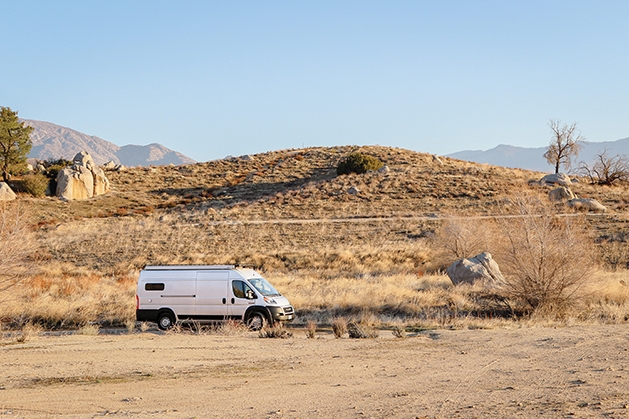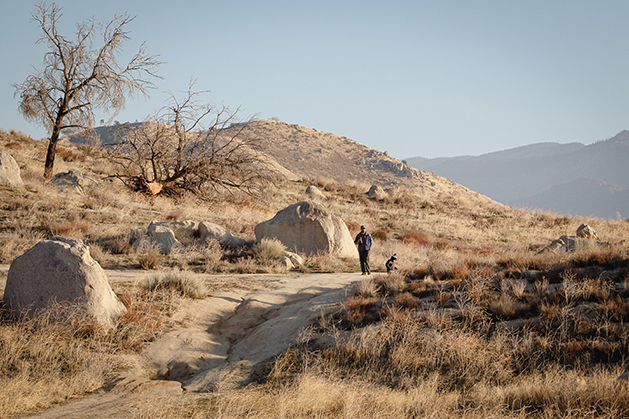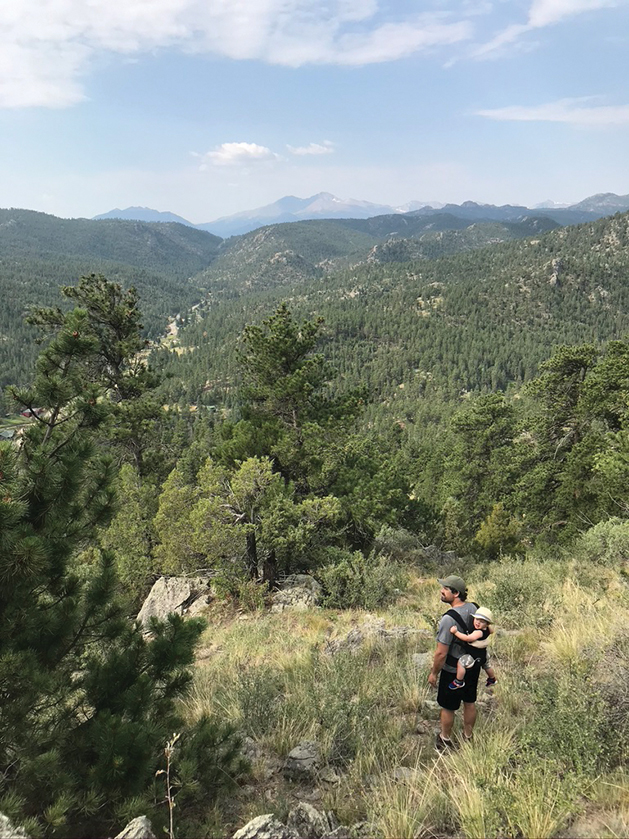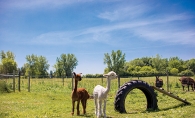
Picture this. You drive up a dusty gravel road, traveling through tall evergreens.
As the road goes on, the trees give way to a view of the mountains. Below, the cool blue water of a river winds through the landscape. You park and take a deep breath of fresh air, watching the sky turn a fiery blaze of reds and yellows. You’re home.
The open road has become home to many in recent decades. And in the past few years, Americans have flocked to embrace the fluidity of this lifestyle en masse, downsizing their lives in exchange for tiny homes, RVs and most recently: vans.
What once was a lifestyle restricted to nomads has entered the mainstream. All generations have turned to vans as a cheaper, simpler way to explore the country in comfort for weeks or even years. One of those people is White Bear Lake resident Erik Lokken.

Lokken owns and operates Narrow Road Van Conversions, a company specializing in converting vans to be self-contained—meaning they don’t rely on an external power source. Customers bring a van to Narrow Road, and Lokken’s team installs all the desired amenities to make the van livable.
So, whether you’re living or vacationing in the van, everything you need to survive in comfort is at your disposal, without the hassle of finding an RV friendly site to park.
“That way you can camp anywhere,” Lokken says. “It’s easier than having to find a spot with a hookup.”
The ability to get away from crowded RV parks is what made van life an attractive idea for Lokken in the first place.

By choosing a van instead of a traditional camper, travelers can often park on public land (when allowed) instead of being limited to a campground, a practice called dispersed camping. Lokken has even camped out of a van on a lake while on an ice fishing trip, in five degree weather.
“It’s such a popular thing right now,” Lokken says. “[COVID-19] really ramped this movement up, as people wanted an activity away from crowds.”
While Lokken and his wife initially slept in the back of his SUV on their travels, he soon realized the amenities and usability of converted vans could level up their adventures. And when the dreams of hot meals over a stove, a cozy bed and a toilet and shower became overwhelming, he decided to go all in, buying two vans with plans to convert and sell them. With the profits, he’d build his dream van.
But it didn’t take long for him to realize that this was more than just a means to an end. The first build went so well he decided to quit his job and do van conversions fulltime.
While a growing population lives and works out of these vans, Lokken says most of his clients use them for vacationing. Many are retirees and empty nesters looking for a fun way to visit family and friends across the country.
While on the road, they can take advantage of new places and experiences and, once there, sleep in their own van. And when converted vans are simpler to drive, store and park than a traditional RV, it’s easy to see why they’re on trend.
Van life has become so popular that there’s even movies about it. In 2020, the Academy Award-winning film Nomadland was released. It follows a woman in her 60s who, facing financial hardship, journeys through the American West in her van. Along the way, she finds comfort within a community of like-minded nomads.
Over the years, Lokken has refined his conversion process to make the ultimate adventure vans.
To transform a simple vehicle into a mini house, Lokken installs modern kitchen appliances and working showers and toilets. He also makes the most of the limited space of each vehicle, incorporating a variety of dual-purpose elements, like bench seats that serve as extra storage, that will perform year-round.
“We focus on making everything fully electric and four-season capable,” Lokken says. “Winterization is important in our builds.”
Lokken says the difficult part is not converting a van—but finding one. Inventory is low because large companies have started to buy them up for deliveries, in addition to increased demand within the private sector. Lokken says one advantage of the shortage is people can buy and convert a van with a safety net. If they decide they don’t like it, they can often get their money back and then some.
“The market for these things right now is crazy,” Lokken says.
Volkswagen and Mercedes-Benz Sprinter vans are common for vanlifers, though Lokken has also converted many Ford Transits and Ram ProMasters. The complexity of converted vans varies, though most of Lokken’s conversions are large custom build projects that take around three months to complete and typically range from $70,000–$80,000.
In the three years since he started his business, Lokken has been so busy converting vans for clients, he hasn’t had a chance to start on his dream van, yet. But, on occasion, he gets to live out his vanlifer dreams on delivery runs for clients across the country. It not only gives him a chance to test out his build, but it also serves as a fun vacation. His wife even tags along.
If you’re looking for change of pace and a way to live life off the beaten path, Lokken recommends trading the RV for a van.
“You’re always in your own world,” Lokken says. “It’s just kind of neat.”
With the melting snow and abundant rain, the rivers run a little faster come spring. Minnesota is lucky enough to have a plethora of beautiful waterfalls, and now is the best time to go see them. As close as Minneapolis and as far away as the Canadian border, there are several options for day trips or weekend getaways.
WATERFALL TOURS IN MINNESOTA
Weekend Excursion:
The North Shore
The North Shore boasts an impressive number of waterfalls, and you’ll almost certainly need a weekend to see them all.
Start with Gooseberry Falls just north of Two Harbors. There are four sets of waterfalls on this river before it spills into Lake Superior, and they can all be accessed in Gooseberry Falls State Park.
Continue north to Tettegouche State Park to check out the falls of the Baptism River. There are four sets of waterfalls here as well, but the most notable is the High Falls—one of the highest waterfalls in the state.
Next up is The Devil’s Kettle at Judge C.R. Magney State Park near Grand Portage. This waterfall has a mysterious hole in the rocks that water pours into. This hole has been the center of controversy as onlookers wonder: Where does the water go? Does it flow into Lake Superior? Is it a secret tunnel leading elsewhere? The answer may not be very exciting (the water rejoins the river), but the waterfall is worth a visit.
End your excursion on a high note with a stop at the tallest waterfall in Minnesota. At 120 feet, High Falls of the Pigeon River in Grant Portage State Park is a transnational waterfall that defines the border between Minnesota and Canada. No waterfall journey is complete without a stop here!
You can also extend your trip with some smaller waterfalls along the Split Rock, Cascade and Temperance rivers. And with a bounty of state forests along the way, it’s easy to find a place to stay overnight, especially if you’re in a van.
Day Trip:
Minneapolis
If a multi-day trip up North isn’t on your itinerary, there’s some impressive waterfalls close to home. Minnehaha Falls in Minneapolis is a little gem in the heart of the city. With a neat park to eat lunch and explore, it makes for a perfect day trip.
narrowroadvanconversions.com
651.269.0547
Facebook: Narrow Road Van Conversions LLC
Instagram: @narrow_road_van_conversions
Photos: Erik Lokken









